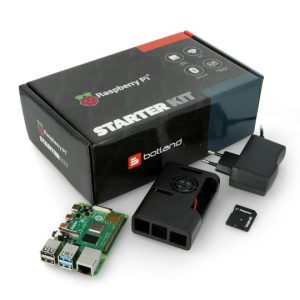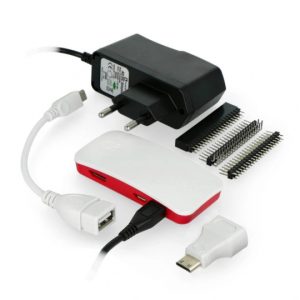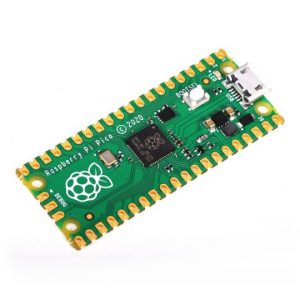Table of Contents:
Computer science and electronics together is an inseparable part of many areas of our everyday life. The proof here is in fact the electronics designers are using embedded systems as a part of everyday use objects such as cars and household appliances. It’s worth to note here that the advanced embedded systems solutions are also available for hobbyists and DIYers.
Such solutions also include the famous Raspberry Pi single-board computer available in several different variants and kits. Let’s take a closer look at a few designs of this amazing platform made for embedded electronics prototyping.
Raspberry Pi 4B – a palm-sized PC
Raspberry Pi 4B looks quite similar to his predecessor – Pi 3B+. But there is much more to expect from this board, because almost every single detail has been upgraded. The most significant difference is a new SoC chip – the Broadcom BCM2711 contains quad-core CPU clocked at 1,5GHz and Video Core VI GPU that supports 4K @ 60FPS image or 4K @ 30FPS for two displays at once, which you connect to the two micro HDMI outputs. You can still connect up to four USB devices at the same time, but the new thing is two USB 3.0 ports, which provide up to 10 times faster data transfer rates than USB 2.0 ports. The designers used dual-band Wi-Fi communication (2,4GHz / 5,0GHz) and the new Bluetooth BLE 5.0. This allows the Raspberry Pi 4B to function as a small and efficient NAS data storage server.
The manufacturer has also equipped the Pi 4B board with a Gigabit Ethernet port and CSI and DSI connectors for the camera and display modules, respectively. The Pi 4B is available in three variants of RAM – 2GB, 4GB and 8GB. For most of the basic embedded applications, 2GB version is enough, but if You would like to use Pi 4B for advanced AI projects or as a desktop computer for web browsing and office tasks – get the 8GB version. In terms of software, the Raspberry Pi 4B supports Raspberry Pi OS, Linux distributions, such as Ubuntu Mate and Windows 10 IoT Core (the last mentioned is free of charge, but without official full support from Microsoft).
Raspberry Pi Zero W – appearances are deceptive
Despite the slightly faster CPU in SoC, Raspberry Pi Zero was not created as a successor to the Pi 2B, but as a smaller alternative that still offers many possibilities for use with a small PCB size. Due to the small surface of the PCB, which is limited by the dimensions of 65mm x 30mm, it was necessary to remove the DSI connector to connect the display module, audio jack, and the Ethernet port. There are two micro USB OTG sockets on the board, one of which is intended for connecting the board to power supply. On the other hand, the HDMI socket, unlike the “bigger brothers”, is available here in a mini version. Like the larger models, the Pi Zero W is equipped with a 40-pin GPIO connector that allows you to connect Raspberry Pi HAT expansion modules, such as a cooling fan, LoRa radio module or servo driver. For this purpose, you have to solder additional pin headers. The latest version of Pi Zero also includes wireless communication via Bluetooth BLE 4.1 and Wi-Fi 2.4GHz.
Raspberry Pi Pico – less than Zero, but a great one
Until recently, the smallest board in the Raspberry Pi offer was the Pi Zero W. It turned out that Pi Zero had too high computing power when taking its main applications into concern. The result was quite high power consumption, which is particularly a disadvantage with wireless devices such as remote-controlled miniature vehicles. It seems that the designers of Raspberry Pi Foundation have found a solution for this problem. It’s called Raspberry Pi Pico, which is close to Arduino Nano board dimensions but offers much higher efficiency plus it’s much cheaper. The 21mm x 51mm board is equipped with the new RP2040 dual core ARM microcontroller clocked at 133MHz of frequency with built-in 256kB SRAM and 2MB FLASH. For external devices such as LEDs, transistors and motor controllers, we received 26-pin GPIO connector that consists of UART, SPI and I2C interfaces and up to 16 PWM channels. In fact, Raspberry Pi Pico is not enough for typical desktop computer applications (such as e.g. Pi 4B), but is still quite powerful, and much more than chosen Arduino boards. Pico takes up a very small amount of space and is an excellent tool for prototyping electronics, and above all, great with applications with medium hardware requirements.
How useful was this post?
Click on a star to rate it!
Average rating 0 / 5. Vote count: 0
No votes so far! Be the first to rate this post.






















